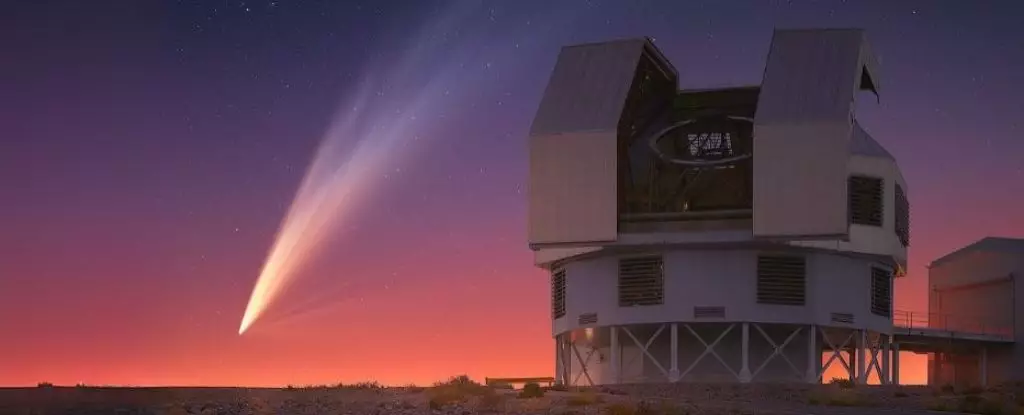Comets have an enchanting allure that captivates both seasoned astronomers and casual stargazers alike. These cosmic travelers romp through the solar system with a flickering brilliance that can either dazzle or disappoint. One such comet, G3 ATLAS, has recently made its presence known, and with it comes a wealth of information and anticipation about our ever-changing universe.
Discovered on the night of April 25, 2024, by the Asteroid Terrestrial-impact Last Alert System (ATLAS), Comet G3 ATLAS entered the astronomical spotlight with great promise. Speculation surrounded its potential bright appearance near perihelion in January 2025. Yet, comets often dwell in the realm of uncertainty; the collective memory of previous comets, particularly those that underperformed like C/2012 S1 ISON, hangs heavy in the air. The unpredictability of these celestial phenomena stirs excitement and trepidation as enthusiasts await their grand display.
G3 ATLAS’s trajectory brought it perilously close to the Sun, reaching perihelion approximately 14 million kilometers away on January 13. Such close encounters invariably raise questions: would it continue to shine brightly, or would it disintegrate under solar pressures? The answers to these questions have immense implications, both scientifically and for the enthralled audience on Earth.
The observations following its perihelion have offered a mixed bag of results. With insights from the Solar and Heliospheric Observatory (SOHO), the comet captured the attention of observers. Its brightness peaked at an impressive -3.8 magnitude, making it the most brilliant comet since P1 McNaught in 2007. This visibility ensured a rush of amateur and professional astrophotographers eager to capture images of the comet’s evolving tail, which displayed beautiful arcs and streaks. One of the signature aspects of G3 ATLAS was how its tails, composed of dust and ion particles, danced gracefully behind the nucleus, leading to striking visuals that delighted the global audience.
However, as with all comets, the fleeting nature of this celestial visitor was starkly evident. The trajectory of G3 ATLAS meant that its brightest moments were largely observable from the southern hemisphere. This unfortunate reality left many northern observers at a disadvantage, deeply yearning for a glimpse of this wonder. A few determined astrophotographers in the north managed to capture the essence of the comet, but for most, it remained a tantalizing tease beyond reach.
By mid-January, as G3 ATLAS continued its voyage, it faced significant challenges. Images taken shortly after perihelion revealed a concerning trend: the comet’s nucleus appeared weakened, leading observers to dub it a ‘headless comet.’ This phenomenon, wherein the nucleus diminishes in brightness while the tail remains vibrant, showcased the fragility of comets. This representation of a ‘headless’ form can symbolize the much larger and often unseen struggles of celestial bodies as they traverse the solar system’s hot and hazardous realms.
Despite G3 ATLAS losing its central brightness, its tail remained a spectacular sight, evolving into a unique striped appearance that excited those fortunate enough to witness it. Observations of G3 ATLAS have painted a vivid picture of how different stages in a comet’s life can captivate astronomers and enthusiasts, underscoring the dynamic processes at play in our universe.
Currently residing in the constellation Piscis Austrinus, G3 ATLAS shines faintly at about +5th magnitude, a stark contrast to its earlier, more dazzling displays. With its journey mapped on a 160,000-year inbound orbit, G3 ATLAS offers a unique glimpse of our solar system’s past and future. The potential return of any remaining fragments after its outbound trajectory of 600,000 years beckons to a future generation of skywatchers, continuing the legacy of inquiry and exploration.
As we reflect on the comet G3 ATLAS, it highlights the privilege of witnessing such cosmic events. While many have moved their gaze southward toward ‘comet country,’ the enchantment of G3 ATLAS reminds us of the wonders that the universe holds—an assurance that, in the vast cosmos, every fading tail begets the promise of new beginnings and future encounters. For now, as we share images and stories of this celestial wanderer, one can only hope that it is but the first of many spectacular comets to illuminate our skies in the coming years.


Leave a Reply